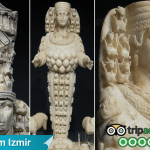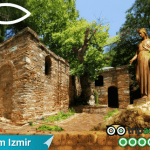Curetes Street in Ephesus, the ancient city’s most famous and visually vivid main street, stretches from the Gate of Hercules to the Celsus Library. Serving as a connection between the political and commercial districts of Ephesus, Curetes Street was a central thoroughfare in daily city life. The Gate of Hercules marks the entrance to the political quarter and is symbolically guarded by reliefs of Hercules, representing strength and authority. These depictions were meant to convey strength and deter those who were deemed unworthy of entering the administrative section of Ephesus.
Table of Contents
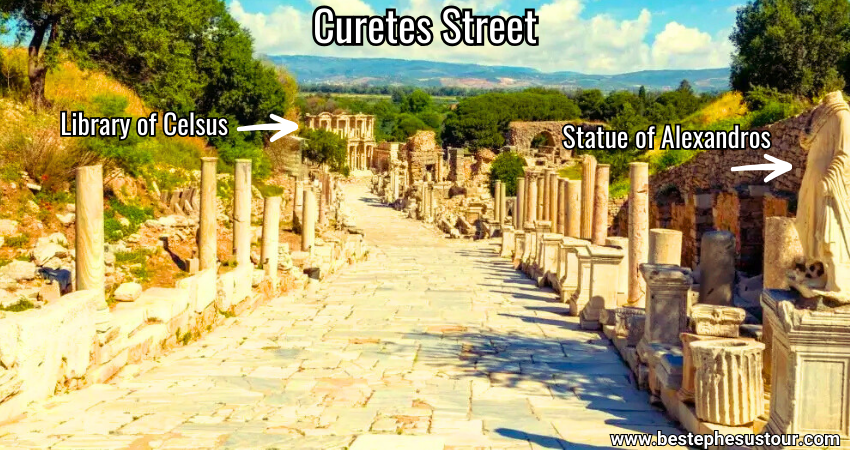
The Sacred Role of the Curete Priestess
The Curetes (Priestess), considered semi-divine figures, were held in the highest esteem by the citizens of Ephesus. Their admiration originated from their legendary role in assisting during the birth of the goddess Artemis. A priestly class known as the Union of Curetes was established to honor their contribution. This group commemorated the birth of Artemis at Ortygia, the sacred site of her origin.
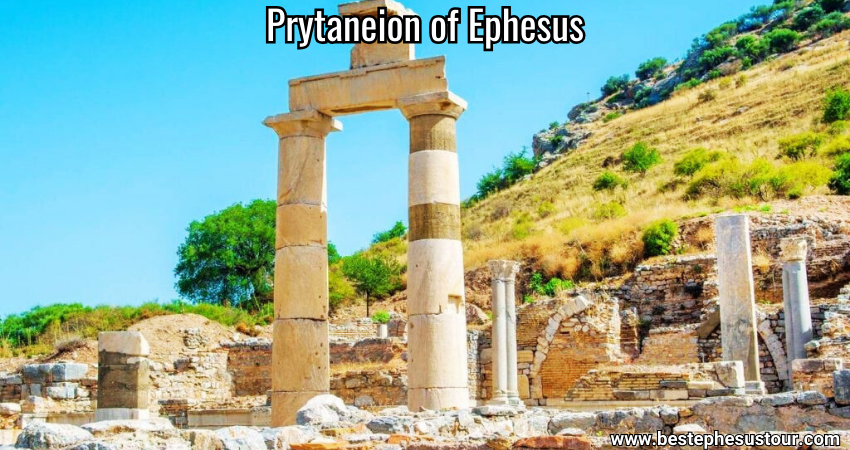
Over time, the Curetes gained a significant place in the Prytaneion, the civic heart of the city. Their names were engraved on columns and various architectural elements, symbolizing their eternal legacy.
Curetes Street: The Heart of Ancient Ephesus
The road stretching from the Hercules Gate to the Library of Celsus was named Curetes Street in their honor. The street was flanked by monumental structures and served as a key urban axis in ancient Ephesus.
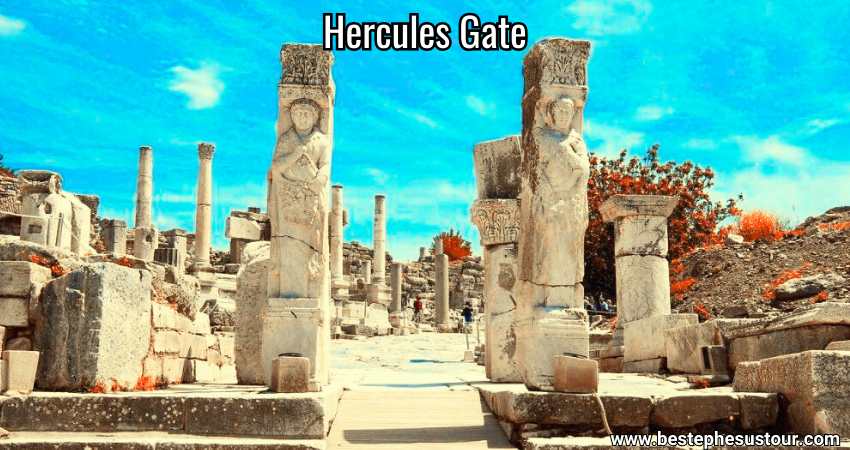
The pavement of Curetes Street consists of marble slabs, while the columned galleries on either side once featured decorative mosaics, some of which have been restored. Interestingly, many of the marble plates and columns were repurposed from other structures. As a result, some columns differ in thickness and color, revealing the layered history of the city.
Restoration and Earthquake Damage
Curetes Street suffered significant damage during the earthquake of 17 A.D., but it was restored with great care. Unfortunately, earthquakes in A.D. 355, 365, and 368 devastated the street once more, along with many other parts of Ephesus. Later reconstructions were done hastily, using mismatched materials recovered from abandoned buildings.
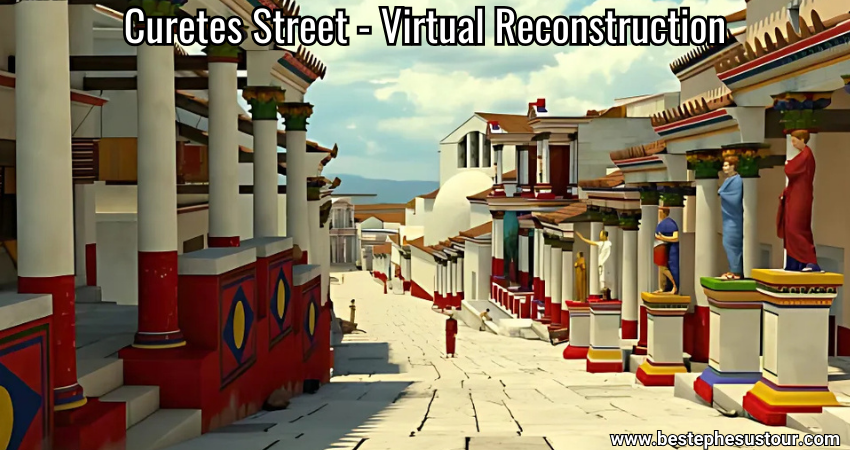
Statues and Inscriptions
The shops, houses, and other structures along Curetes Street had their entrances facing the colonnaded gallery. Between the columns, pedestals once supported statues honoring notable citizens who contributed to the welfare of Ephesus.
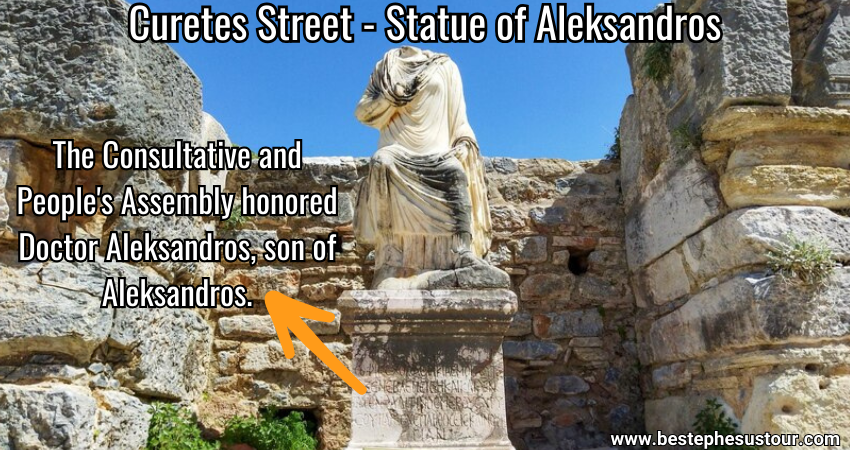
One such example is the statue of the doctor, Alexandros, located near the Hercules Gate. Another statue found on Curetes Street belongs to Councilman Stephanos. This piece is now on display in the Emperor’s Hall of the Ephesus Archaelogical Museum, further highlighting the cultural and civic significance of the street and its honorees.




